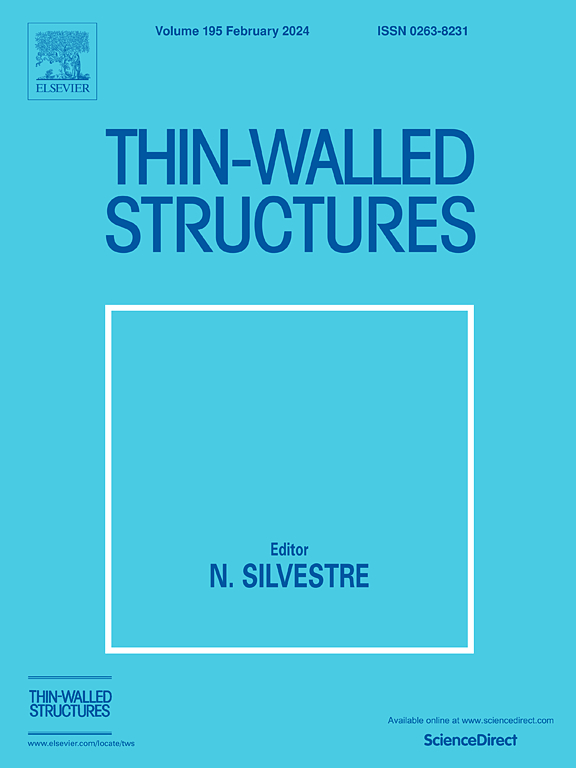Explainable machine learning models for predicting the ultimate bending capacity of slotted perforated cold-formed steel beams under distortional buckling
IF 5.7
1区 工程技术
Q1 ENGINEERING, CIVIL
引用次数: 0
Abstract
This study develops explainable machine learning (ML) models to predict the ultimate bending capacity of cold-formed steel (CFS) beams with staggered slotted perforations, focusing on distortional buckling behavior. Utilizing a dataset from 432 non-linear finite element analysis simulations of CFS Lipped channels, ten ML algorithms, including four basic and six ensemble models, were evaluated. Ensemble models, specifically CatBoost and XGBoost, demonstrated superior accuracy, with test-set performances reaching a coefficient of determination () of 99.9%, outperforming traditional analytical methods such as the Direct Strength Method (DSM). SHapley Additive Explanations (SHAP) were applied to highlight how features like plate thickness and root radius critically influence predictions. The findings underscore the enhanced predictive capabilities of ML models for structural performance, suggesting a significant potential to refine traditional design methodologies and optimize CFS beam designs.
用于预测开槽穿孔冷弯型钢在扭曲屈曲下的极限弯曲承载力的可解释机器学习模型
本研究开发了可解释的机器学习(ML)模型,用于预测带有交错槽孔的冷弯型钢(CFS)梁的极限弯曲能力,重点关注扭曲屈曲行为。利用来自 432 个 CFS Lipped 通道非线性有限元分析模拟的数据集,对 10 种 ML 算法(包括 4 种基本模型和 6 种集合模型)进行了评估。集合模型(特别是 CatBoost 和 XGBoost)表现出了卓越的准确性,测试集的判定系数 (R2) 达到 99.9%,优于直接强度法 (DSM) 等传统分析方法。应用 SHapley Additive Explanations (SHAP) 突出了板厚和根半径等特征如何对预测产生关键影响。研究结果强调了 ML 模型对结构性能的增强预测能力,表明其在完善传统设计方法和优化 CFS 梁设计方面具有巨大潜力。
本文章由计算机程序翻译,如有差异,请以英文原文为准。
求助全文
约1分钟内获得全文
求助全文
来源期刊

Thin-Walled Structures
工程技术-工程:土木
CiteScore
9.60
自引率
20.30%
发文量
801
审稿时长
66 days
期刊介绍:
Thin-walled structures comprises an important and growing proportion of engineering construction with areas of application becoming increasingly diverse, ranging from aircraft, bridges, ships and oil rigs to storage vessels, industrial buildings and warehouses.
Many factors, including cost and weight economy, new materials and processes and the growth of powerful methods of analysis have contributed to this growth, and led to the need for a journal which concentrates specifically on structures in which problems arise due to the thinness of the walls. This field includes cold– formed sections, plate and shell structures, reinforced plastics structures and aluminium structures, and is of importance in many branches of engineering.
The primary criterion for consideration of papers in Thin–Walled Structures is that they must be concerned with thin–walled structures or the basic problems inherent in thin–walled structures. Provided this criterion is satisfied no restriction is placed on the type of construction, material or field of application. Papers on theory, experiment, design, etc., are published and it is expected that many papers will contain aspects of all three.
 求助内容:
求助内容: 应助结果提醒方式:
应助结果提醒方式:


